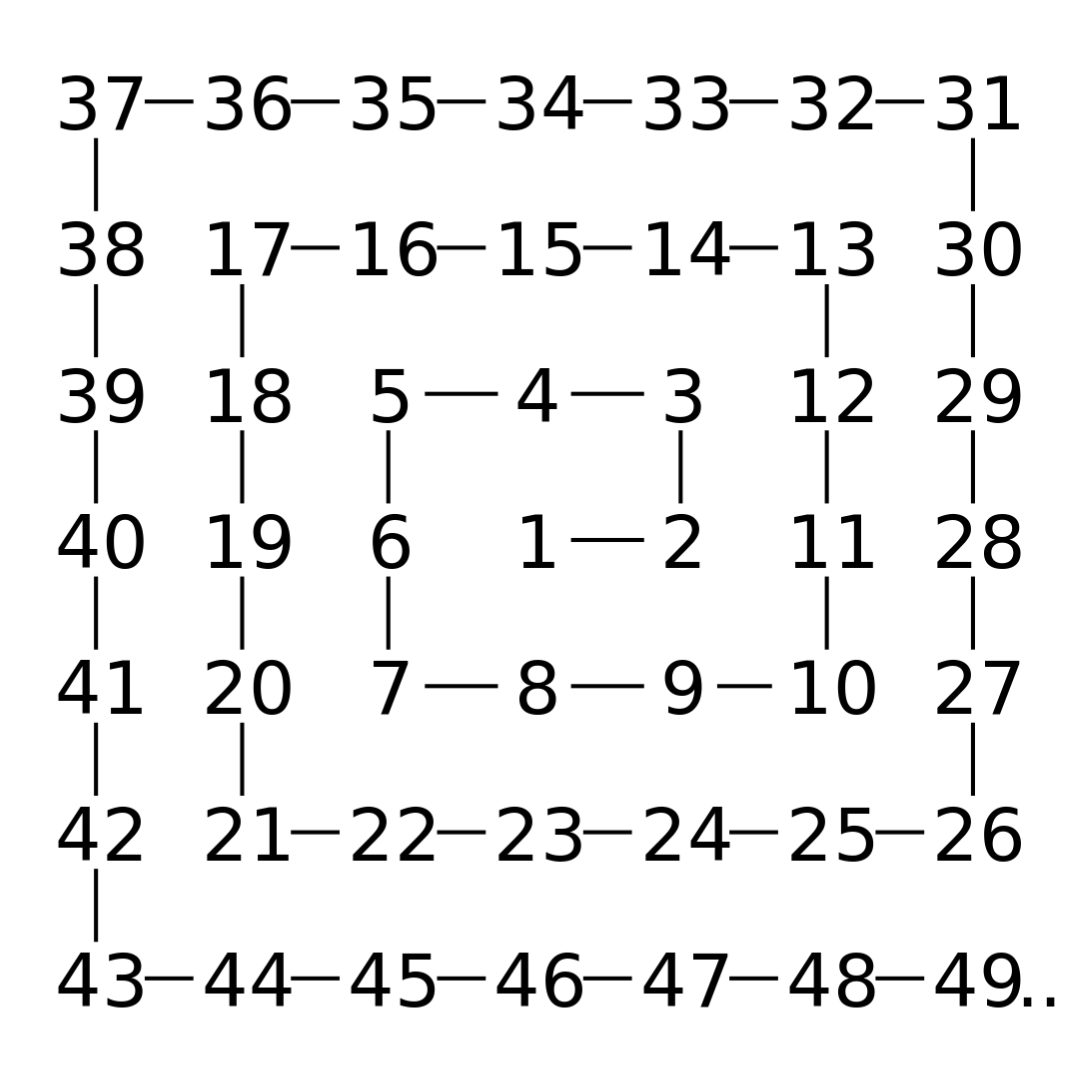Let’s create an outward opening spiral grid of numbers using Python. This pattern involves arranging numbers in a grid format that spirals outwards. We will do this by assigning coordinates to each number.

Fig 1. Outward Opening Spiral Grid
The Code
| |
The code defines a Python function print_spiral_grid(n) that generates and prints a spiral grid of numbers from $n^2$ down to 1, following a clockwise pattern. Let’s break down the code step by step:
Initialization
grid = [[0] * n for _ in range(n)]
This line initializes a 2D grid (list of lists) with dimensions $n$ by $n$ and fills it with zeros. This grid will hold the spiral pattern of numbers.
num = n * n
This initializes a variable num with the value $n^2$. This will be used to populate the grid with decreasing numbers in a spiral manner.
coords = [(0, 1), (1, 0), (0, -1), (-1, 0)]
This defines a list coords that contains four tuples representing directional changes. These tuples represent moving right, down, left, and up respectively.
direction_index = 0
row, col = 0, 0
direction_index keeps track of the current direction (initially set to 0 for moving right). row and col store the current position in the grid.
Assigning Coordinates
The loop iterates from 1 to $n^2$, filling the grid in a spiral pattern with decreasing numbers. Here’s what happens inside the loop:
grid[row][col] = num
num -= 1
The current position in the grid is set to the current value of num, and num is decremented by 1 for the next iteration.
next_row = row + coords[direction_index][0]
next_col = col + coords[direction_index][1]
Calculate the next position based on the current direction.
if 0 <= next_row < n and 0 <= next_col < n and grid[next_row][next_col] == 0:
row, col = next_row, next_col
else:
direction_index = (direction_index + 1) % 4
row += coords[direction_index][0]
col += coords[direction_index][1]
Check if the next position is within bounds of the grid and hasn’t been filled already. If both conditions are met, move to the next position. Otherwise, change the direction (clockwise) and update the current position accordingly.
Printing the Grid
After filling the grid with the spiral pattern, the code prints the grid using nested loops:
for row in grid:
print(" ".join(str(num).zfill(2) for num in row))
It iterates through each row in the grid, formatting the numbers to have leading zeros if needed, and printing them with spaces in between.
The Program in Action
Here is sample output that we get upon executing the program.
Enter the value of n: 5
25 24 23 22 21
10 09 08 07 20
11 02 01 06 19
12 03 04 05 18
13 14 15 16 17
